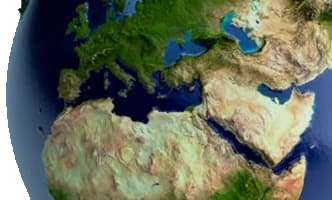After three years of intense diplomatic efforts, the United Nations General Assembly (UNGA) unanimously adopted the Resolution 69/314, entitled ‘Tackling the Illicit Trafficking in Wildlife’ on 30 July 2015. This Resolution marks the first time that the 193 UN Member States have agreed to increase their joint effort to curb the escalating poaching and illegal trade in protected species of wild fauna and flora. Although it is not legally-binding, the UNGA Resolution carries political weight and clearly reflects the international concern over the serious and widespread effects of the aforementioned transnational crimes which plague biodiversity and rural livelihoods, while undermining good governance and the rule of law.
The newly-adopted Resolution, initiated by Gabon and Germany and co-sponsored by more than 80 countries, builds upon a number of crucial international and regional resolutions and declarations on illegal trade in wildlife. Particular cases in point are the Resolution 1/3 adopted in the context of the United Nations Environmental Assembly of the United Nations Environmental Programme (June 2014), the Paris Declaration (December 2013), the London Declaration (February 2014), the Kasane Statement (March 2015), the Brazzaville Declaration (April 2015) and the Doha Declaration (April 2015) [1].
Given the multidimensional economic, social and environmental impacts of illicit trafficking in wildlife, expressly stated in paragraph 203 of the ‘Rio +20’ Outcome Document ‘The Future We Want’[2], the UNGA promotes a holistic approach to preventing and addressing this cross-cutting issue at international, regional and national level. Recognizing the ‘intrinsic value of biological diversity’ per se, this landmark Resolution calls on countries to take action to combat all the interlinked aspects of wildlife trafficking -namely the supply and demand in wildlife products, the international organised crime and the local communities whose livelihoods are severely affected by the wildlife crimes- within the existing international legal framework[3]. In this context, the Convention on International Trade in Endangered Species of Wild Fauna and Flora (CITES), the UN Convention Against Transnational Organized Crime along with the UN Convention Against Corruption provide a comprehensive legal framework capable of decisively addressing illegal trade in wildlife[4].
In essence, the UNGA Resolution consists of 35 wide-ranging provisions. Acknowledging that the protection of biodiversity represents a vital issue of international common interest, the UNGA Resolution calls for enhanced national measures and international cooperation on illicit trafficking in wildlife. In particular, the Resolution aims to fundamentally alter the consumer behaviour in protected species of wild fauna and flora. For achieving this goal, the UNGA Resolution urges States “to strengthen the legislation necessary for the prevention, investigation and prosecution of illicit trafficking in wildlife… as well as the criminal justice responses” to this alarming issue.
Innovatively, the UNGA Resolution characterizes illicit trafficking in wildlife as a ‘serious crime’ in accordance with article 2 (b) of the UN Convention Against Transnational Organized Crime, thus equalizing it with arms trade and human trafficking. Furthermore, the UNGA Resolution calls upon States to treat wildlife offences as predicate offences (such as money- laundering). In parallel, the UN Member States agree “to support the development of sustainable and alternative livelihoods for the local communities affected by the illicit trafficking in wildlife” in the light of their key role in the conservation and sustainable use of wildlife.
From 2016 onwards, the UN Secretary – General is entrusted with the mandate to submit an annual report to UNGA on the implementation of the present Resolution and make proposals for further steps. It goes without saying that the international community considers combatting illicit wildlife trafficking as a high priority issue. Interestingly enough, Marco Lambertini, the WWF International Director General stated: ” This landmark resolution proves that ending wildlife crime is no longer just an ‘environmental’ issue and not just limited to a few countries: it has become a priority for every nation.“[5]
In an effort to highlight the fundamental importance of the UNGA Resolution, Achim Steiner, United Nations Under-Secretary-General and UNEP Executive Director, pointed out: “This General Assembly resolution is an historic step forward, and one I believe will spark the firm and concerted international action needed to combat poaching and those who profit from it. In calling for wildlife crime to be treated as a serious crime, both nationally and across borders, the resolution sends a clear signal to organized criminal networks involved in this illicit trafficking that their time will soon be up. In particular, I hope this resolution will help curb the rampant poaching of elephants and rhinos, whose slaughter threatens not only the health of the species, but also local ecosystems, communities and livelihoods.“.
ENDNOTES
- For further information see: http://www.traffic.org/home/2015/7/30/un-adopts-resolution-on-tackling-wildlife-trafficking.html and https://cites.org/sites/default/files/eng/news/pr/2015/IWT-events_2015.pdf
- UNGA, The Future We Want, (27 July 2012), A/RES/66/288. Available at: http://daccess-dds-ny.un.org/doc/UNDOC/GEN/N11/476/10/PDF/N1147610.pdf?OpenElement
- See: http://www.unep.org/newscentre/Default.aspx?DocumentID=26830&ArticleID=35312
- For further information see: https://cites.org/eng/unga_resolution_wildlife_trafficking_150730
- See: http://wwf.panda.org/wwf_news/?250072/World-unites-to-fight-wildlife-crime-as-UN-adopts-historic-resolution
To view the complete text of the UNGA Resolution on ‘Tackling the Illicit Trafficking in Wildlife’ (doc.A/RES/69/314) press HERE
About the author

Maria Striga
Research and Organization Group, MEPIELAN Centre, Panteion University of Athens, Greece


